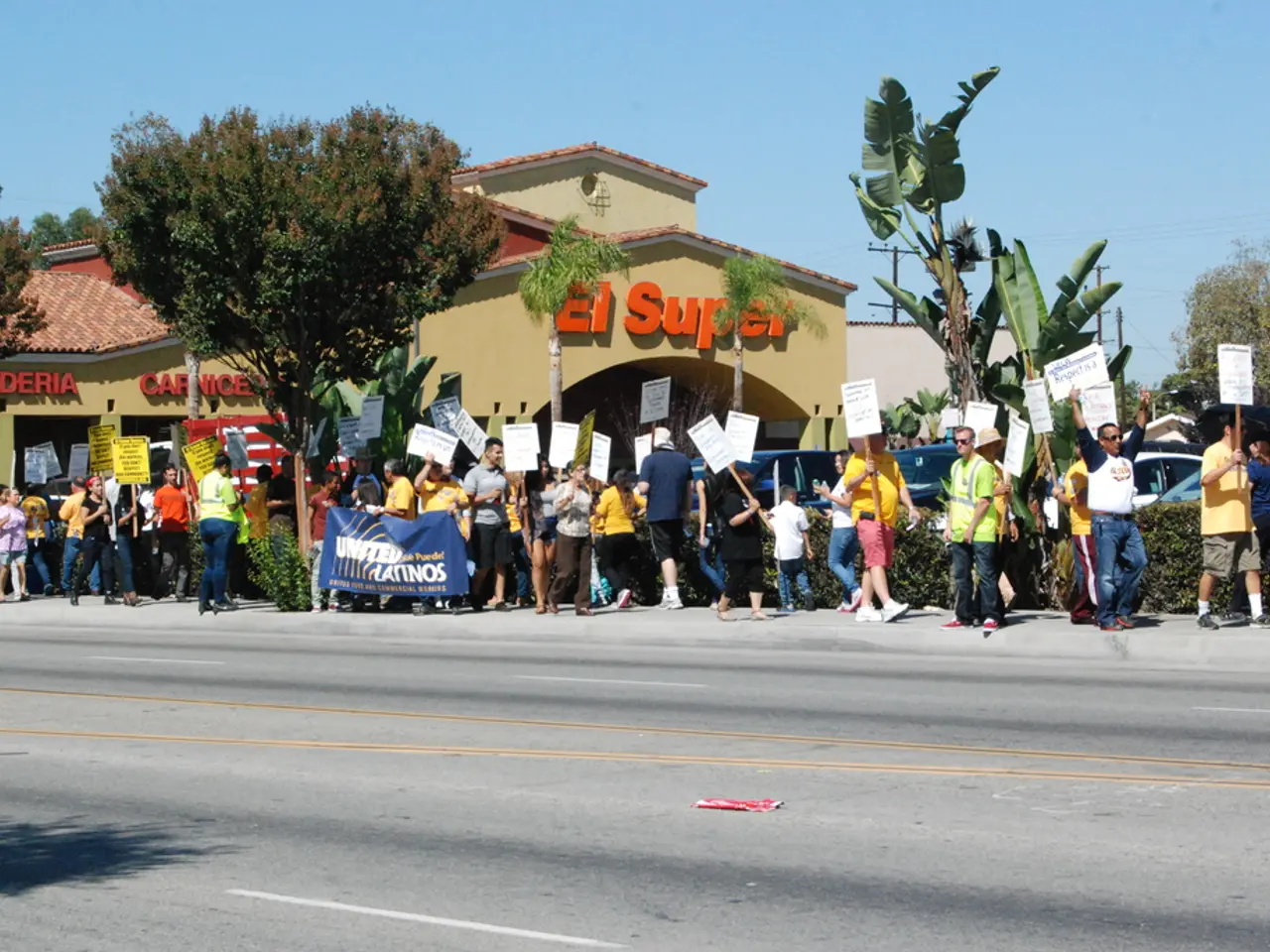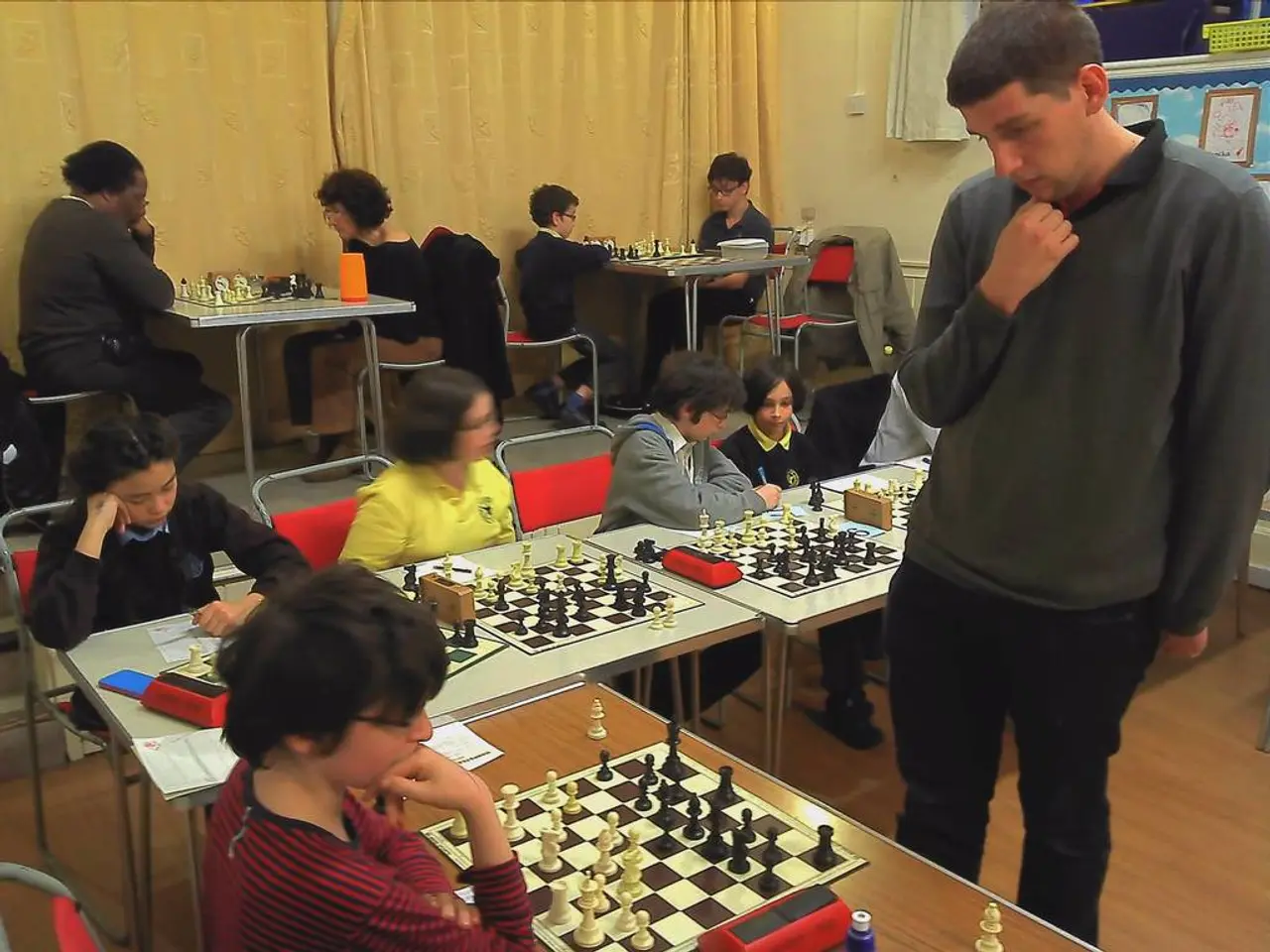deceitful political strategists manipulating the voting process in India, influencing the political landscape
In the dynamic landscape of Indian politics, the role of backroom strategists has grown significantly, shaping the electoral process in intricate and multifaceted ways.
These strategists, working behind the scenes, are instrumental in manipulating electoral rolls and processes. Critics argue that actions such as the Election Commission of India's (ECI) Special Intensive Revision (SIR) of voter rolls, particularly in states like Bihar, aim to create a more favourable voter base for the ruling party by purging the electoral roll [1][2].
Strategic propaganda and electoral engineering are other tools in the strategists' arsenal. They employ high-decibel propaganda, orchestrate defections, buy opposition legislators, and use divisive tactics to weaken political rivals. The ruling party's campaign machinery has been described as a "well-oiled election machine" that uses unscrupulous methods to sway public opinion and electoral outcomes [2].
Financial and legal innovations also play a part in undermining transparency. Tactics like the introduction of electoral bonds have created opaque funding channels, making it difficult to ensure accountability [3].
Moreover, strategists have allegedly influenced or handpicked constitutional bodies to facilitate covert electoral advantages, thereby undermining democratic checks and balances [2]. This trend raises concerns about democratic backsliding and authoritarian consolidation within India’s electoral democracy [1][2].
As elections become more data-driven and complex, the shift towards backroom strategists is driven by factors such as the tribal nature of Indian politics, the need to stand out in a crowded field, and the rise of social media. Technology has allowed for real-time data collection, social media analysis, geotargeted messaging, and automation of routine campaign tasks [4].
Parties in India are looking to mine voter databases and social media to find new voters and understand their issues. Microtargeting, the practice of using data to segment voters and deliver personalized messages that align with their values, beliefs, or interests, is becoming increasingly common [4].
Strategists craft narratives, target key demographics, optimize media timing, and shape public perception using psychological and behavioral tactics. They also pitch stories, build relationships with journalists, control leaks, and frame narratives favourable to their candidate [4].
Polling helps measure voter sentiment, test messaging, adjust priorities, and allocate resources to winnable areas. Effective political strategists possess skills such as data analysis, communication, crisis management, media relations, opposition research, and strategic foresight [4].
A political war room, a centralized hub where strategists monitor data, coordinate messaging, respond to crises, and manage real-time campaign decisions, is a key component of modern campaign management [4].
The future of election strategizing in India is becoming more technologically savvy, with a focus on big data and analytics. Strategists may work for political parties or candidates, and their role is expected to grow [4]. The increasing recognition of backroom strategists is a reflection of elections becoming more data-driven and complex.
However, the increasing role of backroom strategists also raises concerns about the representative nature and legitimacy of electoral outcomes, challenging the foundational principles of India’s democracy. The future of backroom election strategizing in India will significantly impact the country's political landscape.
[1] The Wire, "Bihar's Voter Purge: How the ECI's SIR is a Tool for Disenfranchisement," 2020. [2] The Caravan, "The Rise of the Election Manager," 2019. [3] The Indian Express, "Electoral Bonds: A Tool for Anonymity in Political Donations," 2017. [4] The Hindu, "The Rise of the Political Strategist," 2021.
- Political strategists in India are leveraging resources such as big data and analytics to shape electoral campaigns, reflecting the growing importance of backroom strategists in shaping the political landscape.
- In a data-driven electoral environment, parties are utilising social media and voter databases to microtarget potential voters, employing strategies like personalized messaging and demographic segmentation.
- Strategists are also using campaign strategies like narrative crafting, key demographic targeting, media timing optimization, and public perception shaping, all driven by data analysis and psychological insights.
- Consulting firms offering services like crisis management, media relations, opposition research, and strategic foresight have proliferated, aiding parties and candidates in improving their branding and managing critical situations during elections.
- Although the growing role of backroom strategists offers advantages in terms of data-driven, sophisticated electioneering, critics argue that it challenges the democratic foundations' representativeness and legitimacy, raising concerns about potential manipulation of voter rolls, media biases, and covert advantages within the electoral system.







